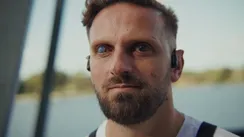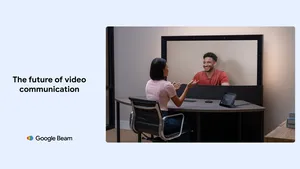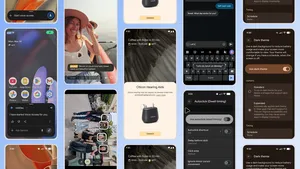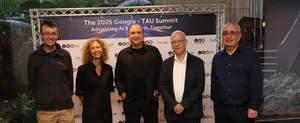How Project Guideline helped me run a half marathon independently
Editor's Note: At Google, we’re interested in exploring how technology can help improve people’s daily lives and experiences. It has been a rare honor to work with Fatmir Seremeti, a paralympic goalball athlete who spreads awareness on what it is like being visually impaired. We created a new version of Project Guideline, an early-stage research project leveraging on-device machine learning, to enable Fatmir to independently run a crowded half marathon — using a phone and headphones to follow a sighted guide in front of him. Below, Fatmir shares why he collaborated with us on this research project, and what the journey has been like for him.
Last week, I tested Project Guideline’s technology as I ran – and completed – the Stockholm Half Marathon.
As a teenager, a severe eye disease drastically changed my life. It transformed my path from a young boy in Rosengård, Malmö, into an elite athlete in the sport of goalball, designed specifically for athletes with a vision impairment. Despite the challenges, I've always sought out new possibilities, from reaching the world elite in goalball to inspiring others through lectures, books, and my presence on social media.
In my everyday life, I navigate with the help of my incredible guide dog Comet and a network of supportive people. I vividly remember the feeling of receiving a guide dog for the first time. It felt almost like regaining my vision. Having Comet or a trusted person to hold on to as I live my life has become second nature to me at this point.
When Google approached me about testing their new machine learning technology for running independently, and free of physical contact, I was immediately on board. We set a course for the Stockholm Half Marathon and began looking at ways to make this dream a reality.
The concept is easy. I would wear a phone on a harness across my chest. The phone’s camera would then look for a physical guide a few meters in front of me and provide audio signals depending on my position relative to the lead runner. Whenever I would veer too far to either side, I would hear a sound get louder, guiding me back to my original position. When testing the technology with the team from Google outdoors in Stockholm, it didn’t take long until we could run kilometers at a time. It was the first time in a very long time that I had been able to run without being physically tied to either my dog or a guide. Now, it became a matter of trying to run even faster.
Fatmir Seremeti in action, demonstrating the power of AI as he navigates the Stockholm Half Marathon course with the help of Google’s research project Project Guideline.

We then began to sketch out how this could work in a race setting. After all, I am as competitive as they come. Realizing that this would be the first time this technology had been tested in such a large-scale race event with both onlookers and loud noises, we settled on having two safety runners accompany us providing verbal directions only when absolutely needed. After a few practice sessions, we were ready to go.
Untethered and physically unassisted, I lined up at the start of the race, surrounded by thousands of runners. I had previously run races holding a rope and tied to a guide person, but this was a brand new experience. I felt free as the horn went off and we rushed through the streets of Stockholm to the sound of a cheering audience. As I crossed the finish line, I was overwhelmed with pride and joy. I had not only completed the race, but I had done it feeling truly free.
A triumphant finish for Fatmir Seremeti, the first visually impaired runner to complete the Stockholm Half Marathon using Project Guideline.

This experience reinforced something I’ve always known to be true: accessibility is paramount. As someone with a visual impairment, the way services are adapted to my needs is crucial. The possibilities of assistive technology can have a real impact in helping create a more inclusive society. I’m sure over a billion people with disabilities worldwide feel the same way.
I'm proud of my collaboration with Google on Project Guideline and excited to see how this still experimental technology can be further developed to bring the joy of running and a new sense of freedom to others like me. Most of all, I’m proud to say that I not only ran, but completed the half marathon freely and independently.







